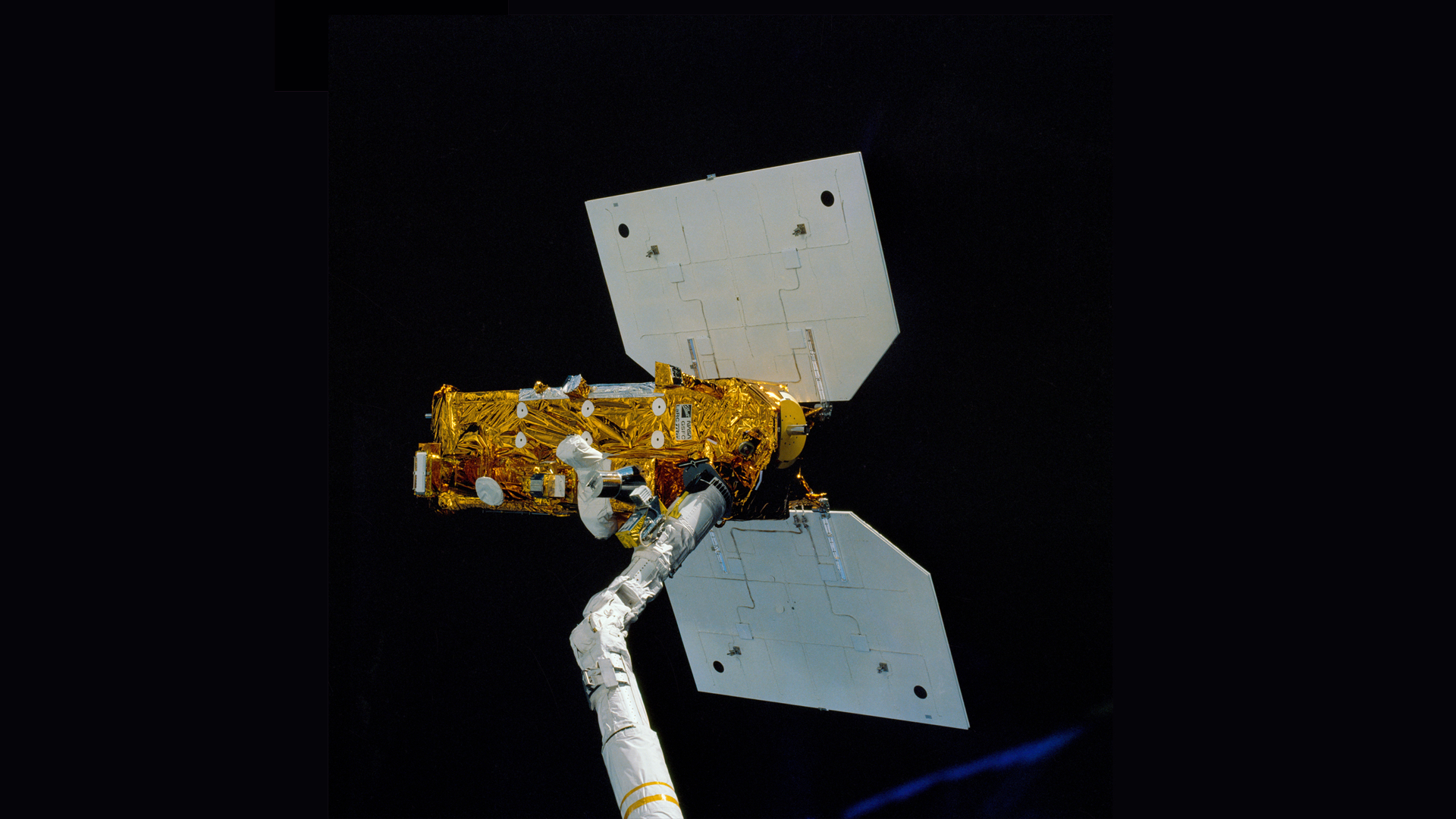
A defunct NASA satellite is expected to reenter Earth's atmosphere on Sunday evening (Jan. 8).
The U.S. military predicts that the 5,400-pound (2,450 kilograms) Earth Radiation Budget Satellite (ERBS) will crash back to its home planet Sunday around 6:40 p.m. EST (2340 GMT), plus or minus 17 hours, NASA officials said.
"NASA expects most of the satellite to burn up as it travels through the atmosphere, but some components are expected to survive the reentry," agency officials wrote in an update on Friday evening (Jan. 6). "The risk of harm coming to anyone on Earth is very low — approximately 1 in 9,400."
Related: Kessler Syndrome and the space debris problem
ERBS, part of NASA's three-satellite Earth Radiation Budget Experiment mission, launched to low Earth orbit aboard the space shuttle Challenger in 1984.
ERBS used three scientific instruments to study how our planet absorbs and radiates solar energy. It was designed to operate for just two years but kept ticking until 2005, after which it became a hefty hunk of space junk. Drag has been pulling the spacecraft down gradually ever since.

ERBS' death dive will come on the heels of some other, more dramatic space-junk falls.
Get the Space.com Newsletter
Breaking space news, the latest updates on rocket launches, skywatching events and more!
In 2022, for example, two roughly 23-ton (21 metric tons) Chinese Long March 5B rocket cores fell back to Earth uncontrolled. These crashes occurred in July and November, respectively, in each case about a week after the rockets helped launch new modules to China's Tiangong space station.
The first stages of other orbital rockets are steered to a controlled destruction just after liftoff or come down for a safe landing and future reuse (in the case of SpaceX boosters). So the Long March 5B falls have drawn criticism from broad swathes of the space community.
ERBS is a different case, of course; it's been aloft for nearly four decades. Still, the spacecraft's coming crash is a reminder that Earth orbit is populated by lots of space junk, which poses an ever-increasing threat as more and more satellites go up.
Mike Wall is the author of "Out There" (Grand Central Publishing, 2018; illustrated by Karl Tate), a book about the search for alien life. Follow him on Twitter @michaeldwall. Follow us on Twitter @Spacedotcom or on Facebook.
Join our Space Forums to keep talking space on the latest missions, night sky and more! And if you have a news tip, correction or comment, let us know at: community@space.com.

Michael Wall is a Senior Space Writer with Space.com and joined the team in 2010. He primarily covers exoplanets, spaceflight and military space, but has been known to dabble in the space art beat. His book about the search for alien life, "Out There," was published on Nov. 13, 2018. Before becoming a science writer, Michael worked as a herpetologist and wildlife biologist. He has a Ph.D. in evolutionary biology from the University of Sydney, Australia, a bachelor's degree from the University of Arizona, and a graduate certificate in science writing from the University of California, Santa Cruz. To find out what his latest project is, you can follow Michael on Twitter.
-
Jan Steinman Are there any "best guesses" as to where this will be visible? Are orbital maps available? I'd like to see the fireball! Or at least, increase the odds of seeing it over just staring at the sky all night.Reply -
TacticalGrace_ ReplyJan Steinman said:Are there any "best guesses" as to where this will be visible? Are orbital maps available? I'd like to see the fireball! Or at least, increase the odds of seeing it over just staring at the sky all night.
Here you go, Jan. You can track the satellite yourself!
https://www.n2yo.com/satellite/?s=15354#results -
billslugg This site shows the most probable location of reentry.Reply
SATVIEW - Forecast for reentry of space junk ERBS (15354U). Track it in Real time
Predicted reentry Thurs Jan 12 17:17 UTC between Australia and Antarctica.









